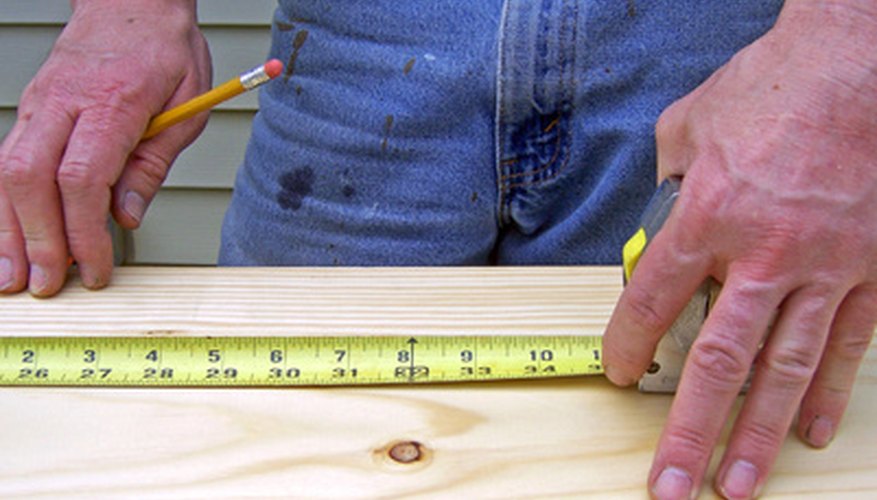Of all the standard pieces of agility equipment, the A-frame is one of the more difficult to build on your own. With effort and care, however, you can build a homemade A-frame and avoid spending the £390 to £650 that a ready-made one often costs. The main features of a well-built A-frame include safety, stability and the ability to withstand the elements if kept outdoors. As well, your A-frame should meet the requirements of the dog agility organisation through which you plan to compete.
- Of all the standard pieces of agility equipment, the A-frame is one of the more difficult to build on your own.
Research the particular requirements and specifications for the A-frame apparatus for your agility organisation (United States Dog Agility Association, North American Dog Agility Council, Teacup Dog Agility Association, etc.) List those specifications and diligently include them in your finished A-frame so that your dog will not get used to using substandard equipment and possibly have difficulty with changes in the competition ring.
Cut ½-inch thick plywood to create two sheets that are 9 feet long by 3 feet wide. Frame these sheets on the reverse side with 2-by-4-inch lumber along the perimeter, adding horizontal cross pieces to provide added stability at either the mid point or between each third of the frame. Use the 3-inch wood screws to attach the plywood to the frame.
Measure from the bottom of each panel up 42 inches to delineate the contact section of the panel and mark as such. Cut 1-inch-by-½-inch strips to make traction slats the same width of your panels. Position slats every 12 inches along the panels, making sure to space them a minimum of 4 inches but not more than 6 inches above and below the contact section edge. Affix slats with liquid adhesive and use wood screws on each side to firmly attach to the plywood panel.
- Measure from the bottom of each panel up 42 inches to delineate the contact section of the panel and mark as such.
- Cut 1-inch-by-½-inch strips to make traction slats the same width of your panels.
Place one panel face down and the other on top facing up. Line up the top edges and screw three heavy-duty 3-inch hinges into the panels to join them together. Use gate hinges or other heavy-duty hinges if you expect frequent use by extra large dog breeds.
Screw two eye bolts into the back sides of the frame of each panel at or just below the mid point. Permanently clip or wire one end of the two, 4-feet lengths of galvanised or stainless steel hardware chain to the eye bolts on each side of one panel. Set up your A-frame and measure the chain length that would allow the top of the frame to be at a 5-feet-10-inch height for larger dogs and a 5-feet-6-inch height for smaller dogs (USDAA). Mark the appropriate link for each height on each chain with tape, marker or paint. Clip a double-headed snap to the chain at the appropriate level, which will be hooked to the eye bolt to hold the angle of the A-frame steady when in use.
- Screw two eye bolts into the back sides of the frame of each panel at or just below the mid point.
- Clip a double-headed snap to the chain at the appropriate level, which will be hooked to the eye bolt to hold the angle of the A-frame steady when in use.
Use exterior paint to mark the contact section of each panel---yellow is commonly used. Paint the top of the A-frame a darker colour, blue is common, to create contrast from the contacts. Consider using a textured paint or mixing sand into your paint to provide extra traction. Weatherize your A-frame with a protective top coating if necessary.
TIP
The finished A-frame will look like the letter A, with the panels forming the legs and the connecting chain forming the cross piece. The contact sections will be at the bottom of each leg. Expose your dog to the A-frame slowly, with proper training. A-frames are heavy and their length makes them difficult to transport. For short moves within one facility, you can temporarily place slide boards or rolling plant stands beneath the two legs and carefully roll the apparatus to the desired location.
WARNING
Never allow dogs to play on an A-frame. They can be injured by accidentally falling from one. Safety experts recommend using only quick release collars, if any, on dogs that will be on A-frames to decrease any possibility of choking entanglement. Never allow children to play on or with an A-frame. Falls, hinge pinched fingers, and scrapes can easily occur. Periodically inspect your A-frame for any loose or damaged hardware and check for wood integrity and smooth edges.
